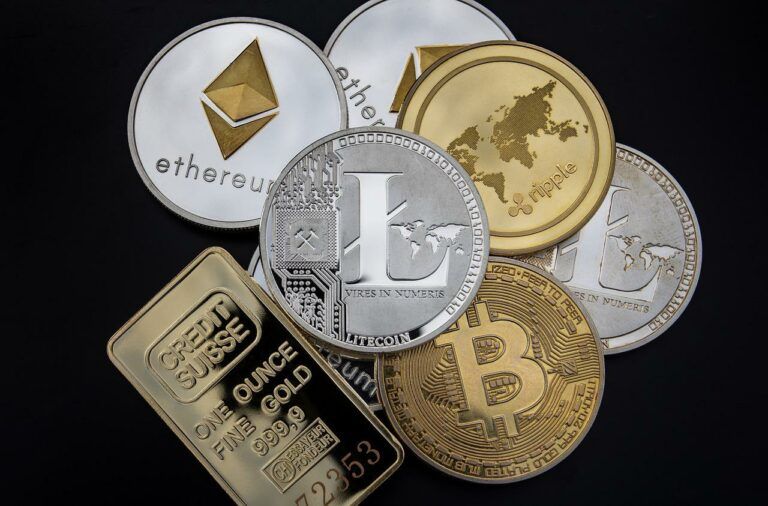Disclaimer: This article is sponsored content and should not be considered as financial or investment advice. Always do your own research before making any financial decisions. The opinions expressed in this article are those of the author and do not necessarily reflect the views of CryptoGlobe.
In an era where digital transformation is no longer a choice but a necessity, blockchain technology stands as a pivotal innovation, redefining how we perceive security, efficiency, and transparency in digital transactions.
From its inception with the legendary Bitcoin to the diverse and sophisticated platforms of today, blockchain has continuously evolved, offering unparalleled solutions across various sectors. In this exploration, we delve into the top 10 blockchains that are not just leading the market but also shaping the future of this revolutionary technology.
These selections are based on a myriad of factors including innovation, security, scalability, user adoption, and their unique contributions to the blockchain ecosystem.
As we journey through each of these blockchains, we uncover the distinct features and advancements that set them apart, offering insights into why they are revered as the vanguards of the digital realm.
- Bitcoin (BTC): The Pioneer and Pillar
Bitcoin, the first and most renowned cryptocurrency, laid the groundwork for what we know as blockchain technology today. Launched in 2009 by an anonymous entity known as Satoshi Nakamoto, Bitcoin introduced the world to a decentralized ledger, offering a secure and transparent way to conduct transactions without the need for intermediaries.
Its key features include a decentralized network, strong security protocols, and a fixed supply cap of 21 million coins, making it a digital store of value akin to gold. Bitcoin’s enduring legacy is its resilience and widespread acceptance, serving as a benchmark for all cryptocurrencies.
- Ethereum (ETH): The Platform for Decentralized Innovation
Ethereum, launched in 2015, revolutionized the blockchain space by introducing smart contracts — self-executing contracts with the terms of the agreement directly written into code. This innovation opened the floodgates for decentralized applications (dApps), allowing developers to build a myriad of applications from decentralized finance (DeFi) to non-fungible tokens (NFTs).
Ethereum’s transition to Ethereum 2.0, shifting from proof-of-work to proof-of-stake, marks a significant stride towards greater scalability, energy efficiency, and speed, cementing its position as a leader in blockchain innovation.
- KleverChain (KLV): A New Contender in the Blockchain Arena
KleverChain is rapidly gaining attention for its distinctive approach and technological advancements. With its recent updates, including enhancements to the Operator CLI Visualization, KleverChain is demonstrating a commitment to continuous improvement and user experience. Operating on a proof-of-stake consensus mechanism, it processes transactions at an impressive rate of up to 3,000 per second, providing an eco-friendlier alternative to traditional proof-of-work blockchains.
What sets klever blockchain apart is its unique integration of smart contracts, or Kapps, directly into the blockchain, inspired by Bitcoin’s foundational approach. This simplification of smart contracts, combined with a robust ecosystem supporting multiple blockchains, positions KleverChain as an emerging leader in the blockchain space.
- Binance Smart Chain (BSC): The Challenger for High Throughput
Binance Smart Chain has rapidly risen to prominence, known for its ability to process transactions quickly and efficiently. As a parallel chain to Binance Chain, BSC offers smart contract functionality and compatibility with Ethereum’s ecosystem, providing developers with a high-performance yet cost-effective environment.
Its dual-chain architecture allows users to build decentralized apps and digital assets on one blockchain and take advantage of the fast trading performance on the other. BSC’s growing ecosystem of dApps, ranging from DeFi to gaming, is testament to its scalability and versatile utility in the blockchain world.
- Cardano (ADA): The Research-Driven Network
Cardano stands out in the blockchain world for its strong commitment to research and peer-reviewed scientific methods. Launched in 2017 by one of the co-founders of Ethereum, Charles Hoskinson, Cardano aims to offer more than just a cryptocurrency. It is a technological platform that can run financial applications currently used every day by individuals, organizations, and governments worldwide.
Its proof-of-stake protocol, Ouroboros, is designed to be more energy-efficient than proof-of-work protocols. With a strong focus on scalability, interoperability, and sustainability, Cardano is a blockchain that aims to provide advanced features through a strong foundation of scientific philosophy and research.
- Solana (SOL): The Speedster of Blockchain
Solana, known for its blazing-fast processing speeds, is a significant contender in the blockchain space, especially for applications requiring high throughput. Launched in 2020, Solana uses a unique hybrid proof-of-stake and proof-of-history mechanism to process transactions quickly and securely.
Its ability to handle thousands of transactions per second at a fraction of the cost of older blockchains has made it particularly popular among DeFi and NFT projects. With a growing ecosystem and a focus on scalability, Solana represents the cutting edge of blockchain efficiency.
- Polkadot (DOT): The Interoperability Maven
Polkadot is an innovative blockchain protocol that enables different blockchains to transfer messages and values in a trust-free fashion, sharing their unique features while pooling their security. Launched in 2020, Polkadot’s unique selling point is its “parachain” architecture, allowing various blockchains to operate independently within one larger network.
This interoperability aims to create a web of blockchains that can communicate with each other, facilitating new forms of data exchange and smart contract functionality. Polkadot’s vision of a scalable, interconnected future positions it as a key player in the evolution of blockchain technologies.
- Avalanche (AVAX): The Platform of Choice for DeFi
Avalanche is rapidly gaining recognition as a highly scalable blockchain platform that delivers near-instant transaction finality. Launched in 2020, it’s designed to host a vast array of decentralized applications and financial primitives.
Avalanche stands out for its unique consensus mechanism, which allows it to achieve high throughput without compromising on decentralization. Its focus on DeFi has led to a growing ecosystem of applications leveraging its high-speed and low-cost transactions. With its ability to create custom private or public blockchains, Avalanche is carving out a space as a versatile and powerful platform in the blockchain landscape.
- Tezos (XTZ): The Innovator in On-Chain Governance
Tezos has carved out its niche in the blockchain space with a focus on on-chain governance and formal verification, which enhances the security of smart contracts. Launched in 2018, Tezos is a self-amending blockchain, allowing it to upgrade itself without having to fork.
This feature, coupled with its formal verification process, makes it an attractive platform for high-stake applications in finance and other sectors. Tezos’ approach to governance and continuous improvement exemplifies its commitment to security and stability in the blockchain world.
- Cosmos (ATOM): Architecting the Blockchain Internet
Cosmos, known for its vision of creating an “Internet of Blockchains,” aims to solve some of the hardest problems facing the blockchain industry today, such as scalability and interoperability. Launched in 2019, Cosmos enables different blockchains to transact and exchange information with each other seamlessly, fostering a more interconnected blockchain ecosystem.
Its unique consensus model, Tendermint, provides a high-performance, secure, and easy-to-use framework for building blockchains. Cosmos’ focus on creating a network of interoperable blockchains positions it as a foundational technology for the future of decentralized systems.
The blockchain landscape is rich and varied, with each platform bringing its unique strengths and visions to the table. From Bitcoin’s pioneering role in establishing decentralized digital currency to KleverChain’s innovative approach to smart contracts, these top blockchains are not just technological marvels but also beacons of the potential for a more transparent, efficient, and interconnected digital world.
As blockchain technology continues to evolve, these platforms will undoubtedly play a crucial role in shaping the future of finance, governance, and beyond. For anyone looking to delve deeper into the world of digital assets and decentralized applications, these top 10 blockchains offer a window into the exciting possibilities of this technology.
Eager to explore these top blockchains and track their performance? Head over to CryptoGlobe, your one-stop destination for real-time, high-quality data and insights on cryptocurrencies.
Featured image via Pixabay.








